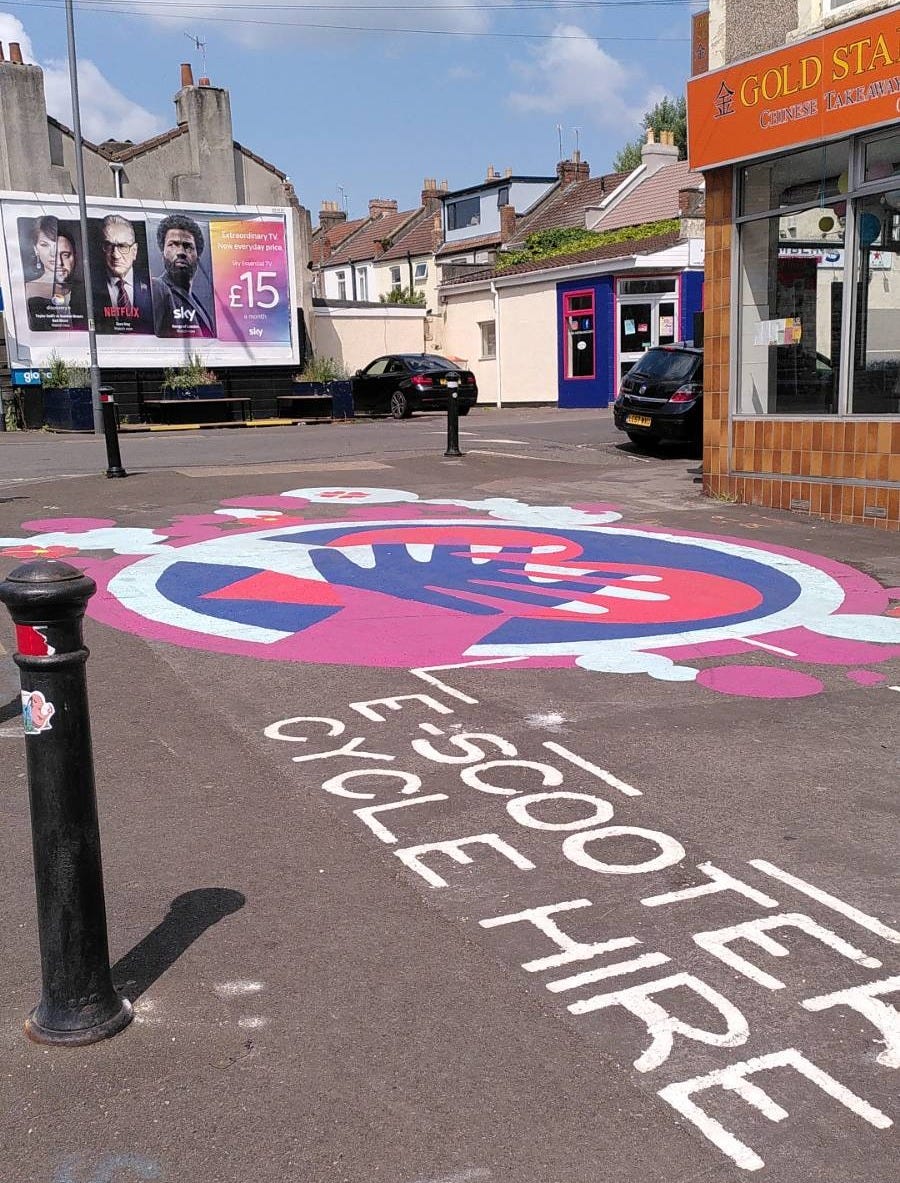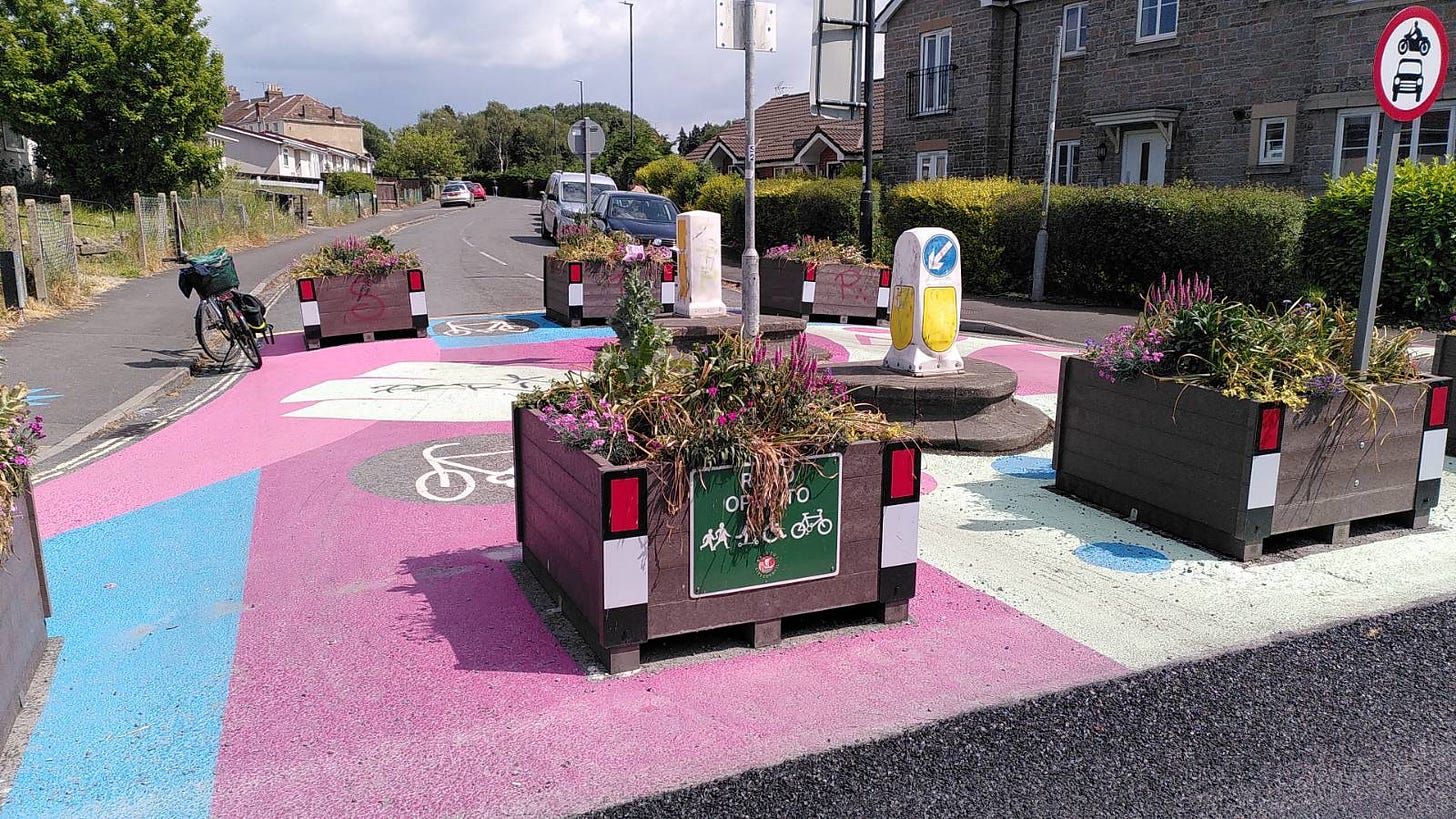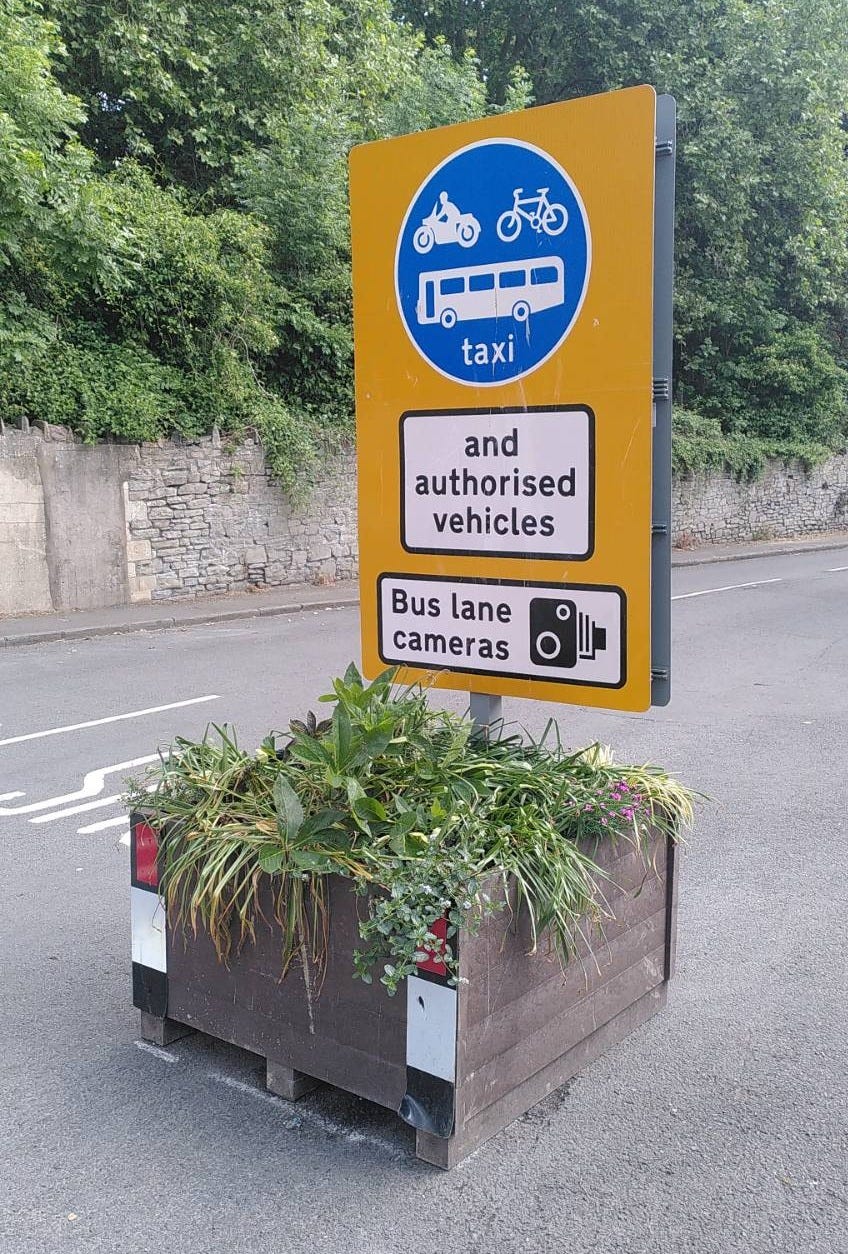Does Bristol City Council have an 'Understanding Disability'?
Tony 'I'm maybe not sure but don't really know' Dyer is interviewed about the adequacy of the EBLN consultation process
A few days ago, Tony Dyer, Green Party leader of Bristol City Council, was interviewed on the Bristol Cable podcast ‘Bristol Unpacked’. Amongst other matters, he was quizzed on the East Bristol ‘Liveable Neighbourhood’ (timestamp 23:30). When asked by Neil Maggs whether he could have ‘handled it better’, particularly the ‘consultation’, Tony admitted that this was ‘a very good question’.
Having inherited the policy from the previous Labour administration, the Green Party apparently, according to Tony, didn’t really know much about the consultation when they started to implement the scheme back in the autumn. With hindsight, he said, they should have ‘maybe’ reviewed it first before they cracked on. He continued, in staccato tones,
Given what’s happened, we probably need to look back and make sure that the engagement that took place was adequate for the East Bristol Liveable Neighbourhood, so I think that’s something that’s being discussed now.
Yes, he thinks it’s being discussed now. He himself apparently remembered discussing it with the ironic combination of Dan Norris (former WECA mayor and man who could potentially be convicted for serious crimes) and the Police and Crime Commissioner. They talked about what they
can do to look back and just make sure the engagement took place [sic] was the right type of engagement. Our transport teams say they are confident it is, but I think there may be a need just to double-check that just to make sure.
The chosen leader of the council of the fifth biggest UK city isn’t quite sure and thinks there may be a need to double-check. Logically, for him there may also not be such a need. He doesn’t really know. His transport teams do know there isn’t a need, but he doesn’t. Maybe he needs to check somehow. Just to make sure his transport teams are right.
Neil wondered if there might be a problem with people having changes made to their communities without being able to have much of a say in them, carefully quizzing the very confused council leader further on the maybe-not-so-sureness of the adequacy of the consultation. Tony responded that he wasn’t sure how broad the community against the scheme in Barton Hill is, or how broad the support for it in St George. Apparently the council just ‘don’t know’ and ‘need to find out’.
One of the local councillors has lobbied for and worked for ‘anti-traffic organisations’, mentioned Neil, implying there may be a bit of bias going on. I might possibly have mentioned this councillor in previous articles - I’m not sure, though, and would need to find out.
But different Green councillors have different views about cars, said Tony. In the end, he said, it’s about finding out how effective the scheme will be, and, if it is effective, they need to find out why people are against it. Because they really don’t know at this point why people are against it.

Tony didn’t say what he meant by ‘effective’, but presumably he was thinking of a net gain in ‘liveability’, the clue being in the name of the scheme. The aim is to make life for people in East Bristol more ‘liveable’.
So back to this ‘consultation’ and ‘engagement’ that Tony wasn’t quite sure had been adequate. The initial consultation was for six weeks in early 2022:
I have to wonder who wrote this. The nudging in these few lines is so hard it’s practically bruising. This condescending text is designed to put into people’s heads that their streets are not safe and thus not ‘liveable’ enough, that liveability revolves solely around a feeling of being safe to walk and cycle, and that they will need the council’s help to feel confident enough to step outside their front doors without being run down by a ‘rat runner’. The council is quite desperate to do a whole lot of understanding, and needs to hear from people living in the area, so it can further understand how the use of streets ‘may change in the future’. This is literally what it says: they want to understand how use may change in the future. Please let me know in the comments if you can decipher this. I’m guessing ‘understand’ was a typo for ‘control’?
I’m also guessing the things people do that they like doing by using the streets they live on are being able to get their kids to school and themselves to work, visiting friends and relatives, getting to the doctor and leisure activities and so on as easily and quickly as possible. That’s kinda what roads are for, right? According to the Britannica online dictionary, a road is
a hard flat surface for vehicles, people, and animals to travel on
(Which defies recent attempts to redefine ‘road’ as
a hard flat surface which I can peacefully sit in the middle of and drink a coffee)
But note that nowhere in this overview word-salad does it say that once they have understood, the council will do what people want with the information they gather. All they will do is get people walking and cycling more, regardless of what they have ‘understood’.
This overview was online, and was accompanied by the distribution of this friendly postcard which would on its own give you no idea at all that a ‘liveable neighbourhood’ is about traffic restrictions and nothing else :

The postcard was the first step in paving the way (with good intentions?) to this:

plus this:

and this:
You have to wonder how many people filled in the miniscule space on the postcard, if they received it at all, with requests such as:
Please can we have some ugly planters blocking our streets to make life more liveable
or
Some lurid and freaky imagery ‘street art’ would make me much happier and healthier
and
Please suddenly make it illegal to drive my normal route to work, catch me out with surveillance cameras and fine me loads of money - that would be awesome!
Those I have spoken to say they actually asked for things like more pharmacies and better rubbish collections, or if it was regarding road safety they wanted more speed bumps and pedestrian crossings.
I wonder how we can help create safer conditions so that Tony Dyer and BCC can feel more confident in actually understanding what people are saying to them?
To cut a very long story short about several more ‘consultations’ and public discussions (including a TRO consultation that showed 760 objections and 427 expressions of support, town-hall style meetings of 150 people saying no to the scheme, a petition against it with well over 6,000 signatures which triggered a ‘debate’ held in the council chamber (time stamp 42:10), countless emails written to and conversations held with councillors as well as critical questions and statements submitted to public forums, and press articles galore) we are now at the point where the leader of the council ‘doesn’t know’ what the level of support is for the scheme in Barton Hill, and still ‘needs to find out’.
Dear Tony, if you happen to read this, and you really still don’t know, may I suggest you take some time for a stroll around Barton Hill, as I did a couple of days ago. There you can find plenty of real people who will gladly tell you directly how their real lives are being made much less liveable by the EBLN.
How their anxiety levels are sky-rocketing and they ‘just want it back to normal, to live a normal life’, as one lady who is afraid to go out without support, not because of the rat runners but because of the powerlessness she feels as a consequence of the EBLN, said.
How one, who has lived there his entire life, is in the process of moving to a different area because his daughter can no longer get his grandchildren to him in time to be able to then get to work in order to pay off her mortgage.
How they are observing an increase in drug-dealing because the dealers can simply escape from the police on their bikes past the planters and not be followed.
How those running small businesses, where for example people buy groceries or collect takeaways by car, have already seen a drop in custom that will only get worse once the bus gates are ‘made live’ on 2nd June and journeys will take way longer.
How many elderly people are anxious because there have been just too many changes for the worse and they don’t know how to get the council to listen to them.
As a charming lady of 86 said to me on Victoria Avenue after I stopped and listened to her concerns,
If you can’t talk to somebody and say about things, what’s it all about?
Go and listen to them, Tony. It’s that simple.








Synchronicity - I just published an article about the EBLN Consultation, with analysis of all the BCC Consultations that show the process is not fit for purpose.
https://bristol-uncovered.uk/liveable-neighbourhood-consultation-what-is-it-good-for/
Brilliant! Loved the new EBLN definition of a road. Those EBLN propaganda posters are positively evil. Does anyone actually fall for that crap?!